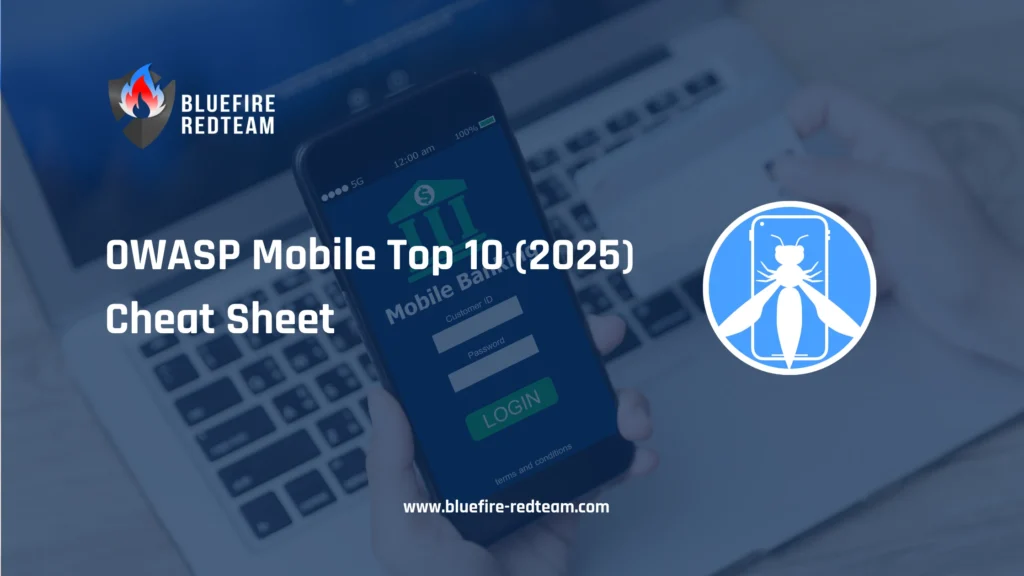Mobile apps are now more than just tools; they are entry points to financial data, personal information, and business infrastructure. The OWASP Mobile Top 10 (2025) continues to be the industry standard for determining the most important security threats in iOS and Android apps, despite the fact that mobile threats are becoming more frequent and sophisticated.
This guide breaks down each of the Top 10 risks in plain English for developers, security teams, and compliance leads.
What Is the OWASP Mobile Top 10?
A widely accepted list of the most prevalent vulnerabilities in mobile applications is the OWASP Mobile Top 10. The Open Web Application Security Project (OWASP) maintains it, and it assists:
- Developers build secure mobile apps
- Security teams perform focused assessments
- Pentesters align with industry standards
- Organizations prepare for compliance audits
It’s closely tied to the OWASP MASVS (Mobile Application Security Verification Standard), which outlines testing criteria.
Get Your Pen Testing Quote
OWASP Mobile Top 10 – 2025 Edition (Simplified)
- Improper Platform Usage – Misusing iOS or Android APIs, permissions, or platform controls.
- Insecure Data Storage – Storing data insecurely on the device (e.g., plaintext, unencrypted files).
- Insecure Communication – Weak SSL/TLS usage or leaking sensitive data over the network.
- Insecure Authentication – Inadequate session management, broken login processes, and weak 2FA enforcement.
- Insufficient Cryptography – Using broken or custom encryption methods.
- Insecure Authorization – Users accessing data or functions they shouldn’t.
- Client Code Quality – Lack of input validation, bad exception handling, and hardcoded secrets.
- Code Tampering – Failure to detect or prevent modified APKs/IPAs.
- Reverse Engineering – Easy-to-decompile code revealing logic or credentials.
- Extraneous Functionality – Debug endpoints, staging features left in production.
➡️ [Download the OWASP Mobile Top 10 2025 PDF Cheat Sheet]
Why This List Matters
The OWASP Mobile Top 10 offers a targeted framework for app developers, security engineers, and compliance managers to:
- Catch common vulnerabilities before attackers do
- Prepare for pentests, audits, or investor reviews
- Train engineering teams on secure coding
Neglecting these areas may result in significant data exposure, penalties, and harm to one’s reputation. Actually, one or more of these OWASP-defined vulnerabilities—particularly in the areas of data storage and communication—are the root cause of a large number of real-world breaches.
Real-World Impact: Breaches Traced to OWASP Failures
- Retail App Breach: Unencrypted local storage exposed customer payment data
- Fintech App Incident: Insecure authentication led to account hijacking
- Health App Violation: Improper platform use triggered HIPAA compliance failure
These aren’t edge cases—they reflect how many mobile apps fail basic OWASP-level security expectations.
Case Study: Bluefire Redteam’s OWASP Mobile Top 10 Pen Test

How to Use This Cheat Sheet
- ✅ Pre-launch Security Review: Map your app features to each Top 10 item
- 🛠️ Developer Training: Educate teams during secure SDLC sprints
- 🔍 Internal Audits: Use it to evaluate vendor or in-house mobile apps
- 📋 Compliance Prep: Reference it during SOC 2, HIPAA, or ISO assessments
Pro tip: Use the cheat sheet as a gate for feature completion in your CI/CD pipeline.
How Bluefire Redteam Tests Against the Mobile Top 10
The OWASP Mobile Top 10 serves as the minimal standard for mobile app pentesting at Bluefire Redteam. Our strategy consists of:
- Manual testing of each risk area
- Mapping findings to OWASP MASVS levels
- Custom proof-of-concept exploits
- Post-assessment remediation support
- Real-time collaboration with your dev team
We delve deeply into business logic flaws, chained vulnerabilities, and reverse engineering vectors that mirror real attacker techniques, in contrast to automated-only scans.


